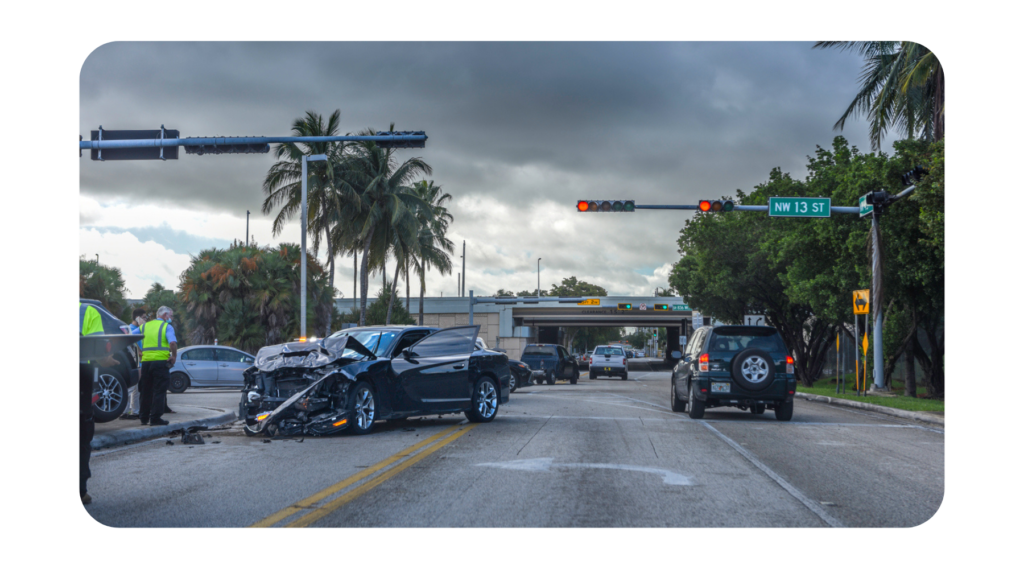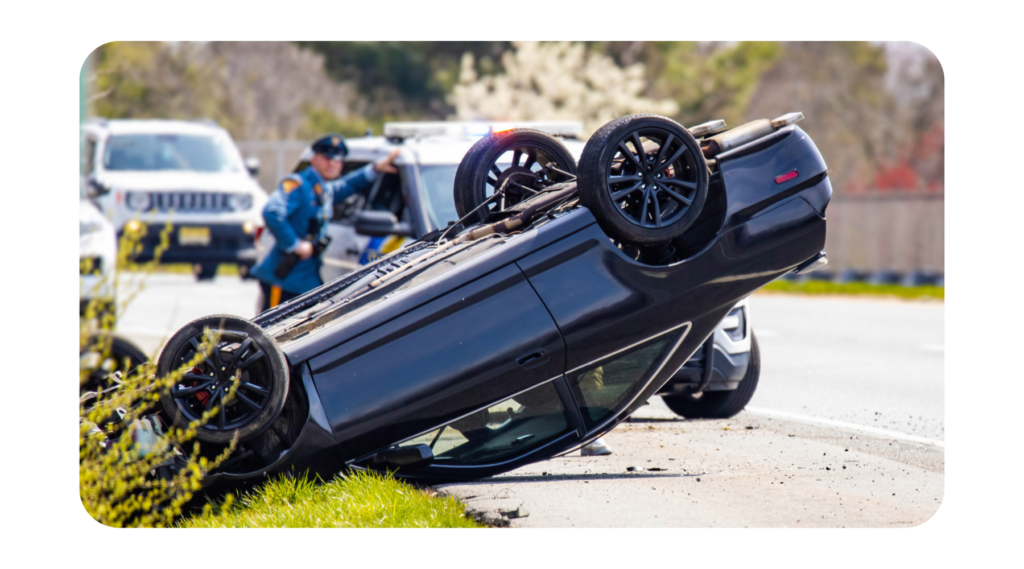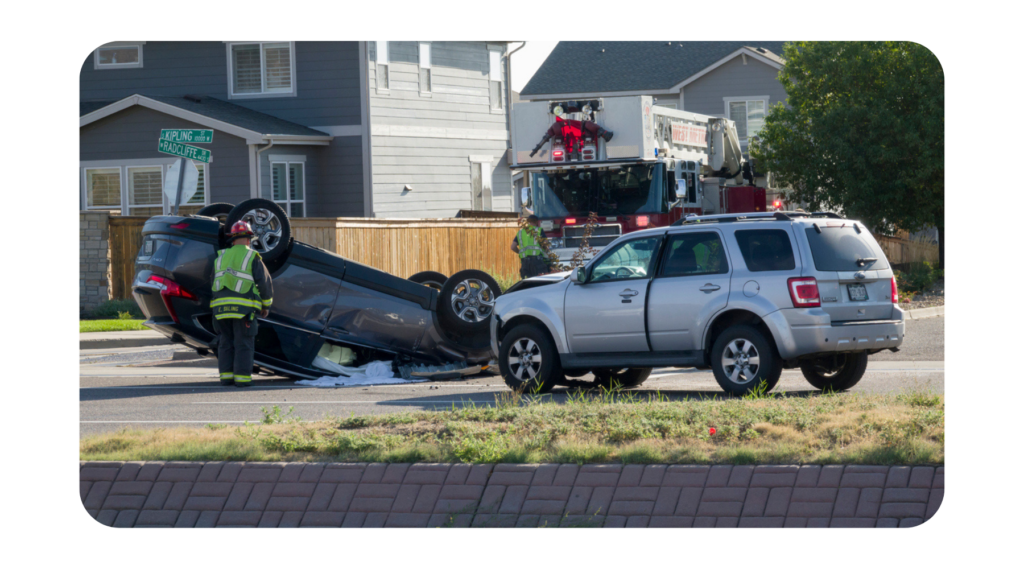How California's Comparative Negligence Law Impacts Multi-Car Accidents

Multi-car accidents happen in an instant, but sorting out who is responsible can take months. One driver slams on the brakes, another swerves, and before you know it, several vehicles are caught in a pileup. Everyone has a different version of what happened, and insurance companies are quick to point fingers.
In California, these cases are handled under comparative negligence, a system that divides fault among all involved drivers based on their level of responsibility. This directly affects how much compensation each person can recover. If you’re not careful, you could end up with more blame than you deserve, reducing your settlement.
At LMS Law, we understand how frustrating and overwhelming this process can be. Our team has extensive experience handling multi-car accident claims, ensuring our clients aren’t unfairly burdened with fault. If you’ve been involved in a crash, knowing how California’s laws work can help you protect your rights and secure the compensation you deserve. Let’s break down how fault is determined, how it impacts your insurance claim, and what steps you should take next.
California’s Comparative Negligence Law: What It Means for Multi-Car Accidents
California follows a pure comparative negligence rule, which means that even if you share some of the blame for an accident, you can still seek compensation. However, your payout is reduced by your percentage of fault. So, if you were 30% responsible for a crash and your total damages amount to $100,000, you’d only receive $70,000. Unlike some states where crossing a fault threshold means you can’t collect anything, California allows claims no matter how much blame is assigned—though the more at fault you are, the less you recover.
This is especially important in multi-car accidents, where fault is rarely clear-cut. Instead of one driver taking full responsibility, blame is often distributed among multiple parties. Determining each driver’s level of fault is a critical step in the legal and insurance claims process.
How Fault is Determined in a Multi-Car Crash

Multi-vehicle accidents are complicated because they involve multiple perspectives, conflicting witness accounts, and a variety of external factors. Insurance companies, law enforcement, and sometimes accident reconstruction experts work together to assign responsibility based on the evidence available.
A common example is a freeway pile-up. Let’s say traffic suddenly slows, and a driver in the back doesn’t stop in time, hitting the car in front of them. That car then hits the next one, and the chain reaction continues. Who’s at fault? The driver who caused the initial impact might be held mostly responsible, but if other drivers were tailgating, speeding, or distracted, they could also be assigned a share of the blame.
Evidence plays a crucial role in these cases. Police reports, dashcam footage, and even data from a car’s event recorder can help establish who contributed to the accident. In cases where liability is disputed, expert testimony might be used to reconstruct how the crash unfolded. Even road conditions and weather can influence fault determination—poor visibility or slick roads could mean reduced liability for some drivers.
Working with California multi-car accident attorneys who specialize in comparative negligence cases can make all the difference. At LMS Law, our legal team collaborates with accident reconstruction experts, forensic analysts, and medical professionals to build a strong case. These specialists provide critical insights that can challenge inaccurate fault assignments, ensuring you aren’t unfairly blamed for more than your fair share of the accident.
How Insurance Companies Handle Shared Fault in Multi-Car Accidents
When multiple drivers share responsibility for an accident, insurance companies step in to determine who pays what. They conduct their own investigations, reviewing accident reports, talking to witnesses, and analyzing vehicle damage. Their goal isn’t necessarily to find the objective truth but rather to minimize their financial liability. This means they often push for a higher fault percentage on other drivers to reduce the payout for their policyholders.
If you’re involved in a multi-car crash, expect negotiations with multiple insurance companies, each trying to shift blame away from their insured driver. This process can drag on for months, with insurers disputing percentages and legal teams stepping in to argue fault distribution. Without strong evidence on your side, you could end up with a much lower settlement than you deserve.
Maximizing Compensation After a Multi-Car Accident

Because fault is divided among multiple drivers, maximizing your compensation requires careful navigation of California’s comparative negligence rules. Here’s what you need to focus on:
- Strong Documentation: Gather medical records, repair estimates, and any photos or videos from the accident scene. Without solid evidence, insurance companies may assign you a higher percentage of fault than you actually deserve.
- Medical Expenses & Lost Wages: These are the most obvious financial damages and should be carefully documented to ensure full compensation.
- Non-Economic Damages: Pain and suffering, emotional distress, and loss of enjoyment of life can significantly impact your settlement, even though they’re harder to quantify.
- Long-Term Effects: If your injuries lead to chronic health issues or limit your ability to work, your compensation should reflect the ongoing impact on your life.
Building a strong claim requires a strategic approach, especially in multi-car accidents where responsibility is shared.
Why Legal Representation Matters in Comparative Negligence Cases
If you’ve been in a multi-car accident, the complexity of assigning fault means that having a legal advocate can make a major difference in the outcome of your case. A personal injury attorney can challenge unfair fault assessments, gather expert testimony, and negotiate with multiple insurance companies on your behalf.
At LMS Law, we specialize in handling the intricacies of comparative negligence multi-vehicle accident claims in California. We know how insurance companies operate and what tactics they use to reduce payouts. If you’re facing a dispute over fault or a lowball settlement offer, we can help you build a strong case.
Take the Next Step with LMS Law
Multi-car accidents can lead to more than just vehicle damage—they often bring lasting financial strain and serious injuries. Navigating California’s comparative negligence laws can be challenging, but you don’t have to do it alone.
At LMS Law, our experienced attorneys specialize in multi-vehicle accident cases and understand the complexities of shared fault claims. We’ll fight to protect your rights, gather the evidence needed to strengthen your case, and work to secure the compensation you deserve.
Contact us today for a free consultation. We’ll walk you through your legal options, answer your questions, and help you take the next steps toward financial recovery. Call us at (415) 400-7000 or reach out online. If you can’t make it to us, we’ll come to you.
FAQs
How does comparative negligence affect my car accident claim in California?
California’s comparative negligence law reduces your compensation based on your percentage of fault in the accident, allowing you to recover damages even if you are partially at fault.
Can I still recover damages if I’m partially at fault in a multi-car accident?
Yes, you can still be able to recover damages, but your compensation may be reduced by your percentage of fault in the accident.
How is fault determined in multi-vehicle accidents in California?
Fault is determined through evidence such as police reports, witness statements, and sometimes accident reconstruction experts, with each driver’s responsibility assessed based on the available information.
The above is not meant to be legal advice, and every case is different. Feel free to reach out to us at LMS Law if you have any questions. Information contained in this content and website should not be relied on as legal advice. You should consult an attorney for advice on your specific situation.
Visiting this site or relying on information gleaned from the site does not create an attorney-client relationship. The content on this website is the property of LMS Law and may not be used without the written consent thereof.







